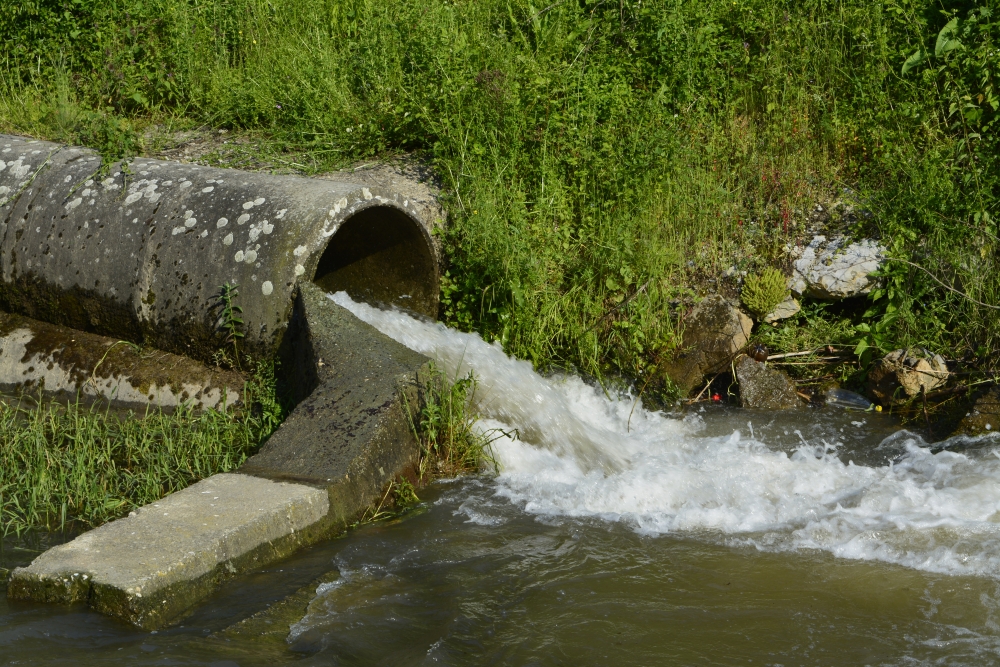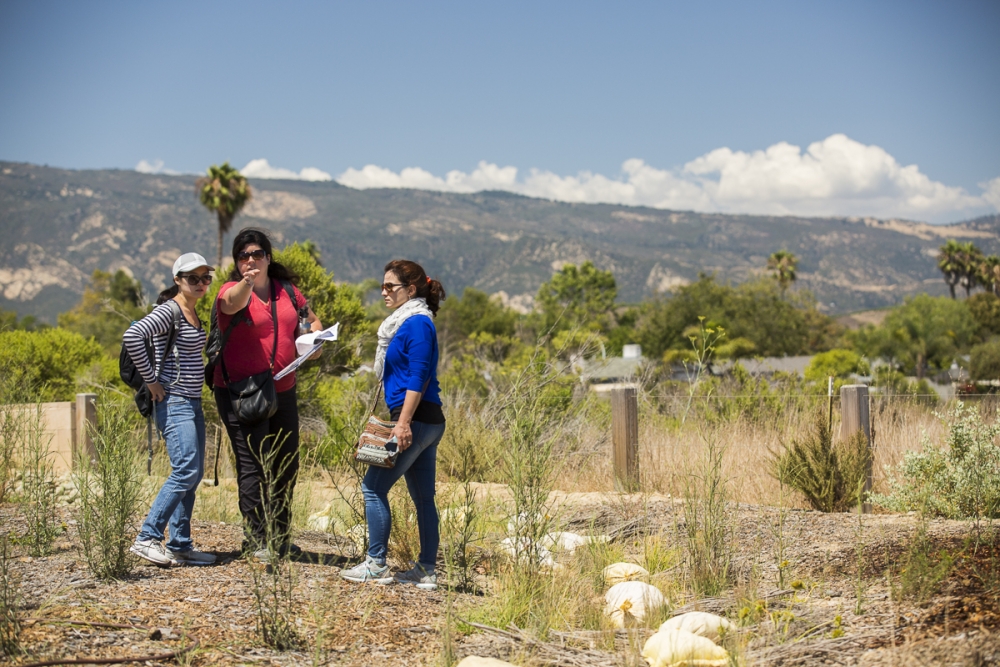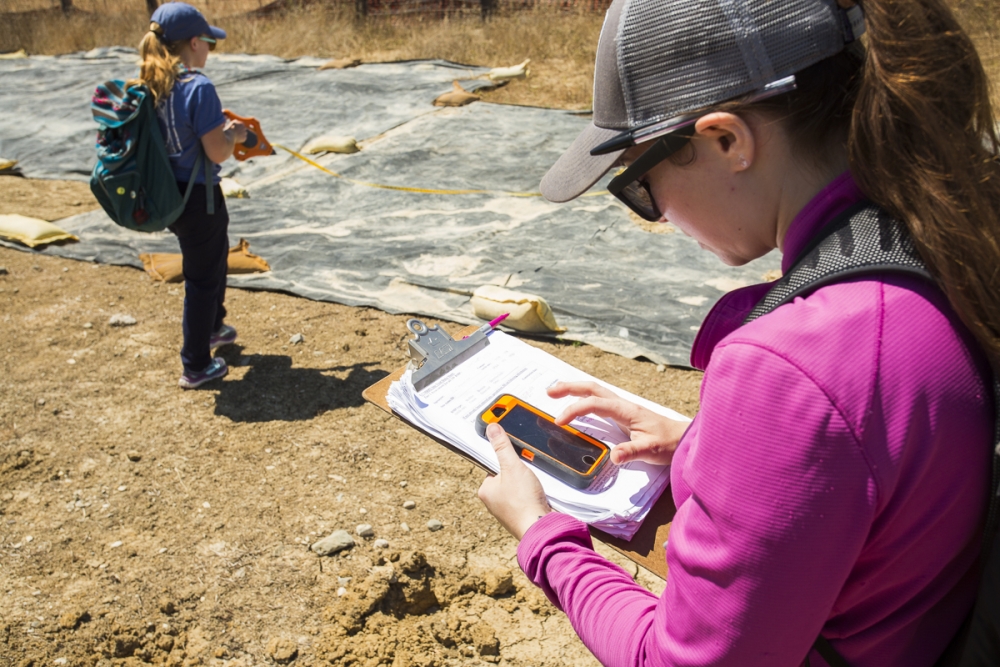Recovering Runoff
Dumping billions of gallons on California every year, rain is the state’s way out of drought — if only all that water could be captured instead of washing into drains and out to sea.
An ambitious new collaboration spanning five University of California campuses, including UC Santa Barbara, hopes to do exactly that. The research partnership of UCSB, UC Irvine, UCLA, UC Riverside and UC San Diego aims to revolutionize the collection and management of stormwater — and demonstrate its potential for addressing drought and flood risk. A $1.9 million UC Multicampus Research Programs and Initiatives (MRPI) grant will help get it done.
The project, “Fighting Drought with Stormwater,” is now underway. Work began in earnest in early August — which happens to be National Water Quality Month. The five Southern California UC campuses will serve as living laboratories for studying natural treatment systems, such as bioswales and biofilters, or rain gardens. The effort is meant to illuminate how well the systems are working now, and how they can be improved in form and function to boost stormwater recovery and bolster water resources.
“Think about the winter rains in this region — the runoff mainly goes out to the ocean,” said Patricia Holden, a professor in the Bren School of Environmental Science & Management and co-investigator on the grant. “But UCSB and other campuses are increasingly instituting ‘green’ approaches, called natural treatment systems (NTSs), for stormwater management that slow down the runoff, capture it onsite, treat it so that it is less polluting to the ocean, and can recharge shallow groundwater.
“Many campuses employ NTSs, but how well do they achieve co-benefits of advancing water neutrality, removing pollutants and delivering other ecosystem services?” she added. “How can knowledge — in biogeochemistry, hydrology, ecology and social sciences — assist optimizing designs and NTS management? What incentives are needed, so that stormwater runoff capture and beneficial reuse — at distributed, small scales — becomes more widespread?”
For UCSB’s part in this multifaceted endeavor, Holden’s team members Dong Li, Marina Feraud and Mitchell Maier are spearheading an investigation into microbial communities in these systems and their impact on nitrogen cycling. By looking into accumulated pollutants in the soil media of NTSs and how they interact with microbes, they hope to ascertain if the level of pollution influences whether NTSs convert nitrate within the system into nitrogen, a harmless gas, or into nitrous oxide, a potent greenhouse gas.
“The big idea behind the whole project is to advance research on stormwater treatment features that would allow us to capture and treat this water so it can be used as a resource,” said Feraud, a doctoral student. “We hope to increase knowledge of microbial communities in these systems — who’s there and what they’re doing — overlaying that with the level of pollution we might see in the soil media. Ultimately we want to increase overall understanding of these systems, and how design and maintenance choices affect their performance as measured by environmental metrics — in this case the potential to accumulate nitrate or release nitrous oxide. Making more informed choices in how we design and maintain these systems can promote their use and implementation, which we think is very important for treating water and improving water quality, while also allowing for beneficial reuse.”
The UCSB group, by way of Li, is also bringing a novel line of inquiry to the project: the potential of these systems to reduce or remove disease-causing pathogens from stormwater runoff, through understanding and possibly enhancing natural predator-prey interactions.
“Sometimes there are human pathogens in stormwater runoff,” said Li, a postdoctoral researcher. “NTSs use bioswales and biofilters to remove these pathogens so that the water can be reclaimed and reused. There are many different pollutants, but human pathogens are particularly important, and we definitely want to reduce their abundances via NTSs. The indigenous microbial ecology may be key to such removal.”
The many other issues being addressed by this sweeping project include how to effect the removal of chemical pollutants from stormwater; the provision of ecosystem services — and potentially disservices — via these systems; understanding related socioeconomic benefits and drivers; and understanding water budgets in these systems toward achieving water neutrality on campuses and beyond.
“This is a great demonstration of a collaborative, forward-looking approach to a critical water issue — of both quantity and quality — in Southern California, and one whose discoveries can be informative beyond the campuses,” Holden said. “We aim to use the campuses as testbeds, but produce understanding that can inform sites in surrounding communities.”
The ultimate, long-range goal?
Transform the infrastructure of such treatment systems from what today, the researchers say, is a major cause of environmental degradation into a “multifunctional green system that augments urban water supply, protects human and ecosystem health, minimizes flood risk and ensures public safety.”
Said principal investigator and civil engineer Stanley Grant, of UC Irvine, when the grant was announced, “My hope is that by the end of our project, we will have set the southern UC campuses on a path toward becoming ‘stormwater-neutral,’ by which I mean all rain that falls on the campuses will be captured and used locally. It’s our chance to help the UC maintain its position as a global leader in environmental sustainability research and practice.”






